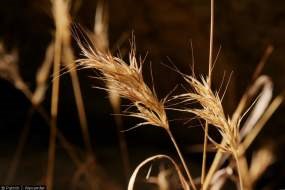
Patrick J. Alexander @ USDA-NRCS PLANTS Database Tonto National Monument, which lies at the northeastern boundary of the Sonoran Desert, is home to a surprising diversity of native plant species, ranging from the treasured saguaro (Carnegiea gigantea) to the Arizona sycamore (Platanus wrightii). Exotic invasive plants also can be found at the Monument. Within the U.S., these non-native plants threaten native plant diversity and cause economic impacts estimated at more than $100 billion annually. In addition to competing with and displacing native plants, these introduced species can hybridize with natives, alter growing conditions, and promote the establishment and spread of other non-native plants. The National Park Service considers non-native invasive plants to be the “single most formidable threat of natural disaster of the 21st century”. Invasive plants increase fire hazard and can alter the frequency and intensity of fires. They can destroy or reduce habitat for native plants and animals and decrease the food supply for herbivores. Invasive plant species consume about 4,600 acres per day in the West, competing with native plants and agricultural crops for scarce water resources. Exotic Plants at Tonto National MonumentThe Sonoran Institute and National Park Service staff conducted an inventory of exotic plants at Tonto National Monument during the summer of 2005. Four species, all grasses, were recorded in high densities and over large areas: wild oats (Avena fatua), red brome (Bromus rubens), ripgut brome (Bromus rigidus), and Lehmann lovegrass (Eragrostis lehmanniana). These non-native species are the most problematic within the Monument due to their relative abundance, difficulty to control, and level of impact on the surrounding ecosystem. Red brome is of particular concern within the Monument. It can impact the frequency, intensity, and rate of spread of wildfires. Additionally, this non-native species can displace native plants. Red brome can be found throughout Tonto National Monument, ranging from 6 to 50% cover. Buffelgrass (Pennisetum ciliare) is an additional species of concern. This is the first record of buffelgrass at Tonto National Monument. While not widespread within the Monument – growing only along the sides of Highway 188 – it is of great concern as it invades aggressively. All of the buffelgrass recorded during the survey has been removed and new individuals are sought out on a regular basis by park staff to help eliminate the threat of spread by vehicles, animals, and foot traffic.
Mapping + Monitoring = ManagementThe National Park Service uses sound science to make decisions about how to manage the land and resources of the Monument. Early detection, status, and trends of exotic plant species comprise two of the Sonoran Desert Network Inventory and Monitoring Program’s vital signs. The Sonoran Desert Network is one of the first networks in the United States to develop vital signs or monitoring protocols for its national parks. Vital signs measure changes over time in ecosystems and help land managers make better decisions. To monitor the exotic plants in Tonto National Monument, researchers used an intensive mapping method, conducting walking surveys to map individual plants and invaded regions using handheld computers and global positioning system units. The mapping process allows the park’s staff to monitor the presence and abundance of non-native invasive plants in the park, and allows them to control and eradicate those plants. Eradication - One Plant at a TimeManual removal has ensured the control or eradication of several non-native plants. The Monument collaborates with other agencies, organizations, and visitors to effectively control and eradicate invasive plants. Several volunteer projects have been organized to help remove invasive plants. Park staff and volunteers have spent numerous hours removing early season and annual invasive grasses. Along with treatment, park staff continues to remove invasive plants on a regular basis. Help Prevent the Spread of Invasive Plants
For More Information:NPS Sonoran Desert Inventory and Monitoring Network |
Last updated: October 20, 2023
